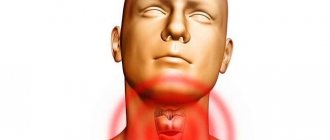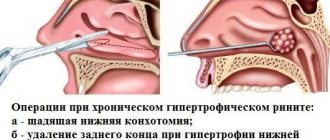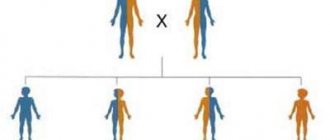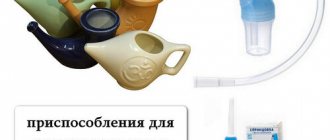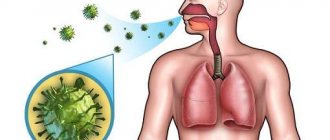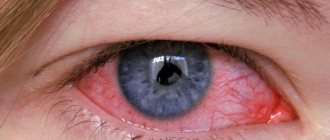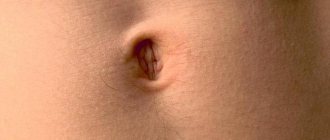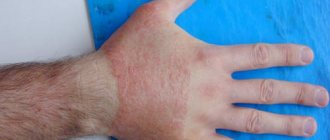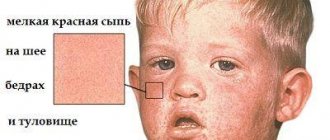Frontitis is a process of inflammation of the mucous membrane in the frontal sinus area. The ailment is rare and has pronounced symptoms in the form of intoxication and headaches. The person is also tormented by copious discharge in the form of pus and poor health. The disease is dangerous because without timely and qualified treatment it can lead to serious and life-threatening complications. A prolonged chronic inflammatory process in the area of the frontal sinuses often causes death.
Types of disease
Today there are two main forms of this ailment, which are classified according to the degree of occurrence:
acute - it is characterized by rapid and abundant reproduction of pathogenic microorganisms in the nasal cavity and frontal sinuses. The duration of progression of the disease is from two to three weeks;- chronic - is a kind of “continuation” of the previous form and appears due to poor cleansing of the sinuses of the forehead.
This can occur during excessive curvature of the nasal septum and in case of incorrect treatment of a previously developing inflammatory process.
Important! Both categories of disease are difficult to treat and dangerous, and therefore require qualified treatment and all diagnostic procedures.
As for the types of this disease, they are as follows:
exudative - it is characterized by the formation and accumulation of fluid in the frontal sinuses, which can be either serous and catal, or actually purulent in nature;- productive - involves tissue distribution in the inner part of the sinuses;
- viral – the cause of its occurrence is viral-type infections that appear after or during ARVI;
- bacterial – formed as a result of the “combination” of bacteria and a viral inflammatory process;
- fungal – formed due to the negative impact of a fungal type infection. It is observed mainly in elderly patients;
- allergic – develops due to the presence of allergic reactions;
- mixed - consists of several different forms of the disease.
The disease is also divided depending on the location of the immediate lesion:
- unilateral - the formation and progression of inflammation is observed exclusively in the left or right sinus;
- bilateral - both sides are affected by the disease.
Each type of ailment requires individual therapeutic therapy.
Only a qualified physician will be able to accurately determine the type of sinusitis that has formed and prescribe the necessary treatment.
Treatment
The disease is treated with conservative and radical methods. Surgical intervention is decided when drug therapy fails. For the treatment of acute sinusitis, the patient is sent to the hospital.
Therapy
- vasoconstrictor drugs;
- irrigation aerosols;
- antipyretic and anti-inflammatory drugs;
- antibiotics;
- antihistamines.
Patients are prescribed drops with a vasoconstrictor effect. The following drops help suppress the disease: Galazolin, Vibrocil, Naphthyzin, Tizin. Each of these agents can be administered into the nasal passages, two drops 4 times a day.
After this procedure, 5-10 minutes later, irrigate the nose using propolis tincture, Cameton, Isofra, Polydexa or another spray prescribed by the doctor.
Acute, chronic frontal sinusitis and any other type of sinusitis must be treated with antibiotics. They are discharged for 10-14 days. Help to treat the disease: Ampiox, Zinnat, Cefazolin, Macropen.
Along with antibiotics, antihistamines are taken: Suprastin, Tavegil. It eliminates swelling, keeps antibacterial drugs under control, preventing adverse reactions from developing.
For frontal sinusitis, mucolytic agents are prescribed. They dilute the purulent discharge coming from the nose. ACC-long facilitates the outflow of mucus.
The temperature is relieved with Efferalgan, Aspirin, Nise, Paracetamol.
Anti-inflammatory medications treat all forms of sinusitis, including chronic sinusitis. They suppress inflammatory processes and improve the outflow of pathogenic contents. Patients are recommended to take Fenspiride, Proposol, Nasonex, Collargol.
Causes
In most cases, the following factors lead to the formation of malaise:
poor treatment of past rhinitis or a simple runny nose;- the constant presence of bacteria in the human body. In small quantities they are not capable of causing much harm, but if for one reason or another the immunity has been lowered or another factor has appeared that is favorable for their reproduction, they can lead not only to complications, but also to death;
- certain ailments suffered. It could be scarlet fever, diphtheria, etc.;
- the appearance of adenoids, which do not manifest themselves in any way during infancy, but having reached a certain size, lead to swelling in the mucosal area. As a result, the canal between the nasal passage and the paranasal sinus is blocked;
- difficulty breathing through the nose, caused by organ injury.
There are also predisposing factors that can trigger the onset of the disease. These include:
- violations of the structure of an organ that a person received hereditarily;
- allergic rhinitis;
- weakened immune system;
- neoplasms in the area of the paranasal sinuses and nasal cavity;
- ailments of the upper respiratory tract that have become chronic.
Similar problems can occur in people of any age category.
In order to minimize the possibility of the disease occurring, it is necessary to responsibly treat its factors and carry out preventive actions.
Unfortunately, some signs of illness are difficult to determine on your own, so it is necessary to see a medical specialist at least once a year.
Symptoms of frontal sinusitis in adults
A distinctive feature of the symptoms of the disease is that it is difficult to notice for an ordinary person who is not associated with medicine. In addition, it may be similar to symptoms of other diseases.
The most basic symptom of frontal sinusitis in adults is systematic pain in the head area. Photophobia and pain in the eye part, difficulty in natural breathing through the nose may also be observed.
Over time, abundant discharge from the organ begins to appear, initially serous and then serous-purulent in nature. Body temperature is often subfebrile. However, there are cases of its increase to 38-39 degrees.
There is tissue swelling in the area of the medial canthus, the anterior end of the middle concha swells and the mucous membrane becomes hyperemic. A person’s performance is also radically impaired, as he feels a strong loss of strength, loss of appetite, apathy and fatigue.
In addition, the natural process of sleep is disrupted and there is an unpleasant sensation of a certain “bloating” in the area of the bridge of the nose. If the disease has become chronic, then the symptoms become almost invisible. In addition, it can systematically appear and disappear.
Symptoms of frontal sinusitis in children
Naturally, it is not always possible to clearly explain to a child what worries and hurts him, which is why it is almost impossible to detect the presence of this illness in a child at an early stage. The main factor in the formation of the disease in children is a runny nose, because their body is not yet strong enough and cannot fully cope with the viruses in it.
So, the symptoms of the disease in children are as follows:
the presence of a slight increase in temperature and it does not matter what kind of illness provoked it, in any case you need to immediately go to a medical specialist;- excessive moodiness and tearfulness;
- sleep disturbance;
- complete or partial refusal of food.
- attention became distracted, severe weakness, malaise and lethargy appeared.
In most cases, the child becomes less attentive, weakened and lethargic. Excessive discomfort may also occur.
Similar symptoms are not uncommon in other diseases, so it is not easy to determine the presence of frontal sinusitis.
There are certain signs that can appear only with this disease, namely:
- the face becomes swollen and pale;
- there is severe dryness in the oral cavity;
- congestion extends not only to the nose, but also to the ears;
- There is a cough in the morning;
- when the head is tilted, the pain becomes intensified;
- there is an unpleasant odor in the nasal secretions;
- nasal voice;
- the eye area is watery and red;
- pain in the frontal sinus area.
The presence of pain is the first and main sign of the development of a disease called “frontitis”.
In a child's body, the disease often has a latent form.
The child is quite susceptible to the disease, which can progress at a high speed, so parents are obliged to pay due attention to his health and contact the clinic at the slightest suspicion of illness.
Therapeutic rinsing therapy
This method of treatment is possible for self-therapy at home. To do this, you need to have devices for washing procedures, syringes or sprays.
In medical institutions, cavities are washed by moving medicinal solutions from one nostril to the other. When the solution is poured into one nostril, then into the other with a syringe, it is sucked out along with the pus. This method is called cuckoo.
The name comes from the fact that during the procedure the patient must repeat the word ku-ku-ku-ku. This is done so that the product does not enter the mouth.
Diagnostics
As mentioned earlier, frontal sinusitis is a complex and dangerous disease; the symptoms and treatment in adults and children are almost identical. However, to accurately determine the presence of ailment, diagnostic procedures must be carried out, the basis of which is x-ray.
Using radiography, you can get a complete picture of the problem:
relationship of the forehead sinuses;- condition, size and shape of the disease;
- determine the location of other formations in the facial skeleton;
- detect the presence of pathologies formed in the frontal sinuses;
- establish the complete absence of the forehead sinus, an indicator of the thickness of the bone walls and brow arches.
In the resulting image, the disease has a more languid hue. For example, in a healthy person, the color of the eye socket and sinus of the forehead are completely identical.
Despite its accessibility and convenience, radiography has limitations in terms of sensitivity, so frontal sinusitis that develops in a child is often confused with rhinitis.
Also another popular diagnostic technique is sinusoscopy or as it is also called “endoscopy”. During its implementation, a special endoscope is used to determine the characteristics of inflammation through direct visual inspection.
A medical specialist may prescribe diaphanoscopy, which is carried out using a bright light beam that illuminates the area of the paranasal sinuses in the nasal cavity. In addition, the following can be used:
ultrasonic echolocation;- thermography;
- laser flowmetry.
These techniques are used exclusively as a complement to the main diagnostics.
If necessary, the physician may prescribe laboratory tests to detect the direct causative agent of the disease.
All methods are equally effective and make it possible to deal with the emerging disease to the maximum and prescribe the correct treatment therapy.
Consequences
Timely access to the services of qualified medical specialists will minimize the possibility of dangerous consequences of inflammatory processes in the area of the frontal sinuses. In this case, the disease discussed in the article will be completely cured.
But an incorrectly selected treatment course or the transformation of frontal sinusitis into chronic can cause such troubles as:
meningitis - is a lesion of the spinal cord and brain;- abscess - is a purulent inflammation in the brain area;
- blood poisoning;
- Osteomyelitis – involves the formation of pus in the bones.
Considering the above, we can confidently say that the disease is very serious and requires medical competence.
Important! Often the advanced state of frontal sinusitis leads to death.
That is why it is necessary to visit the doctor’s office on time at the slightest suspicion that something is wrong.
Why do you need an x-ray for inflammation?
The appointment of an x-ray helps to identify the first signs of pathology and diagnose it in the early stages of development. However, diagnosing frontal sinusitis has some disadvantages:
- based on the use of radiation;
- has low sensitivity;
- lack of high-resolution technical capabilities.
Despite the shortcomings of the diagnostic procedure, x-rays are a more informative method for detecting the inflammatory process. The study is prescribed at the stage of selecting therapeutic measures, as well as to assess the dynamics and effectiveness of the selected treatment method.


